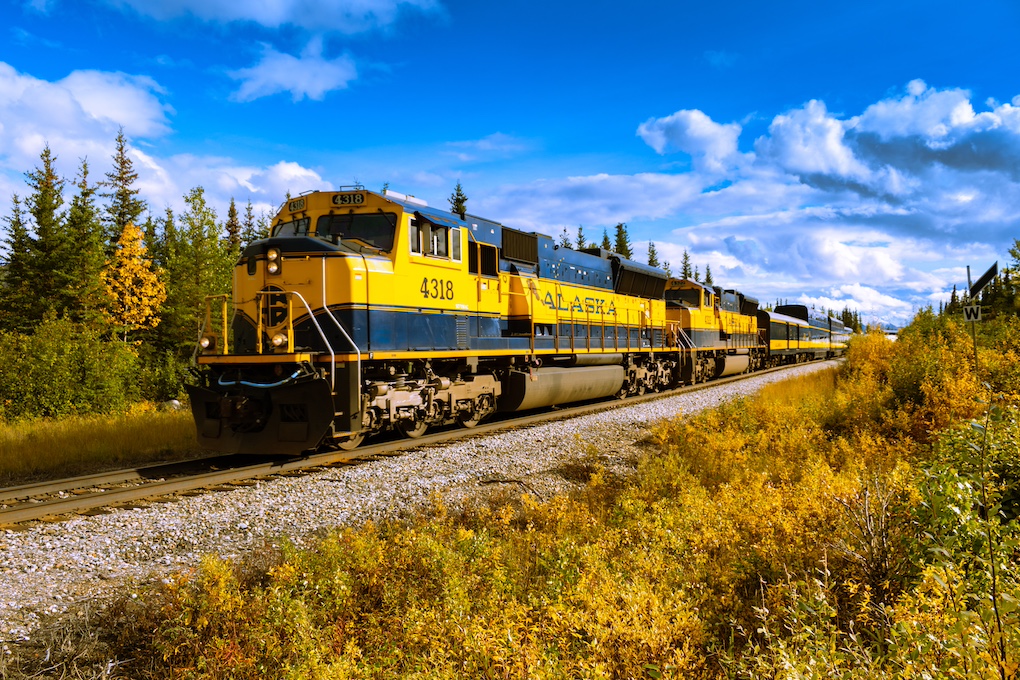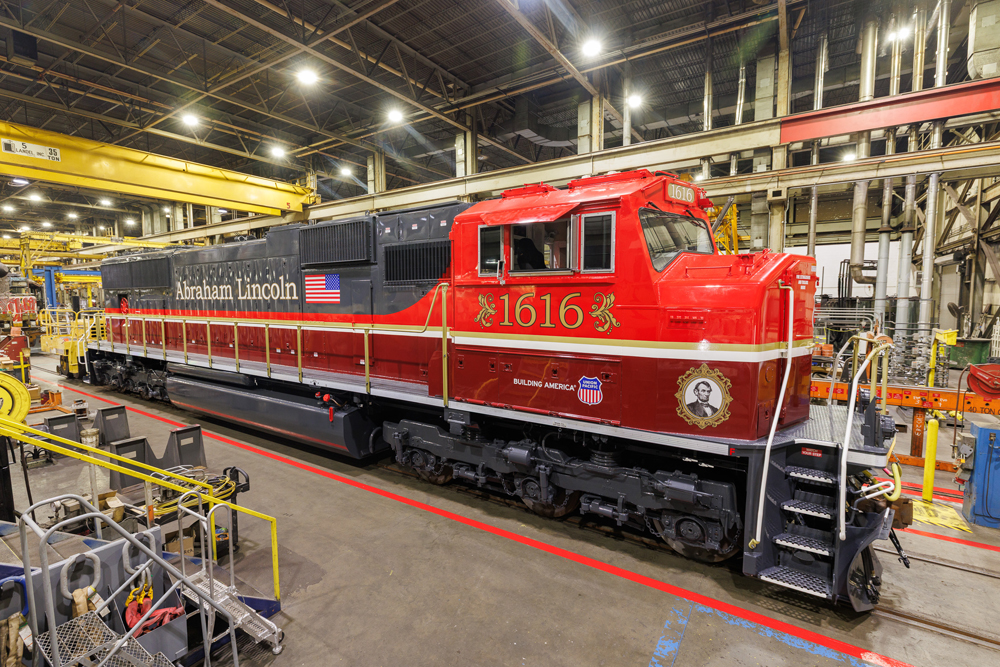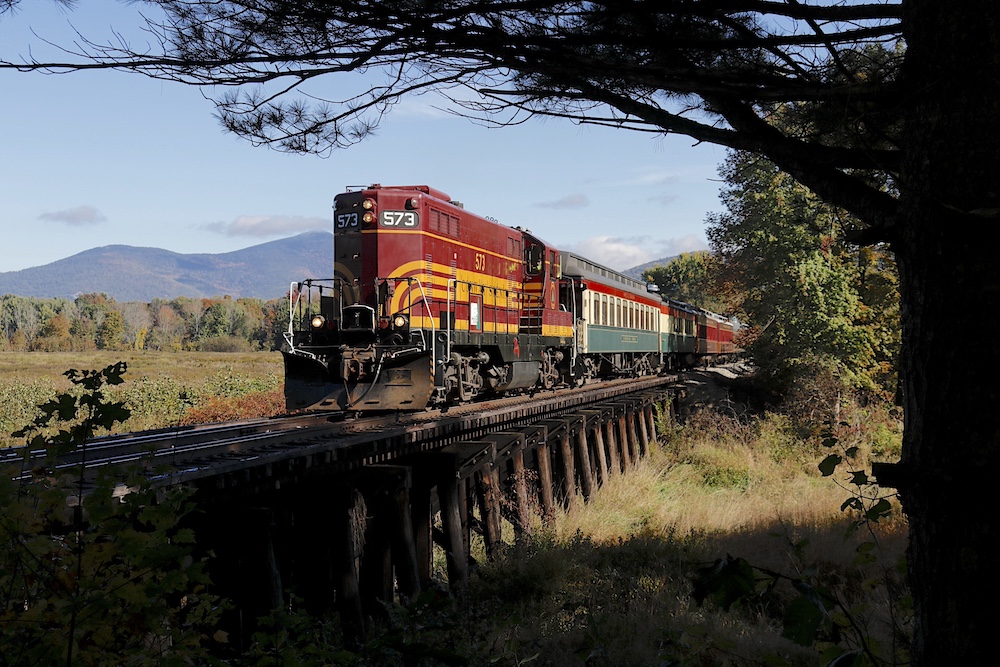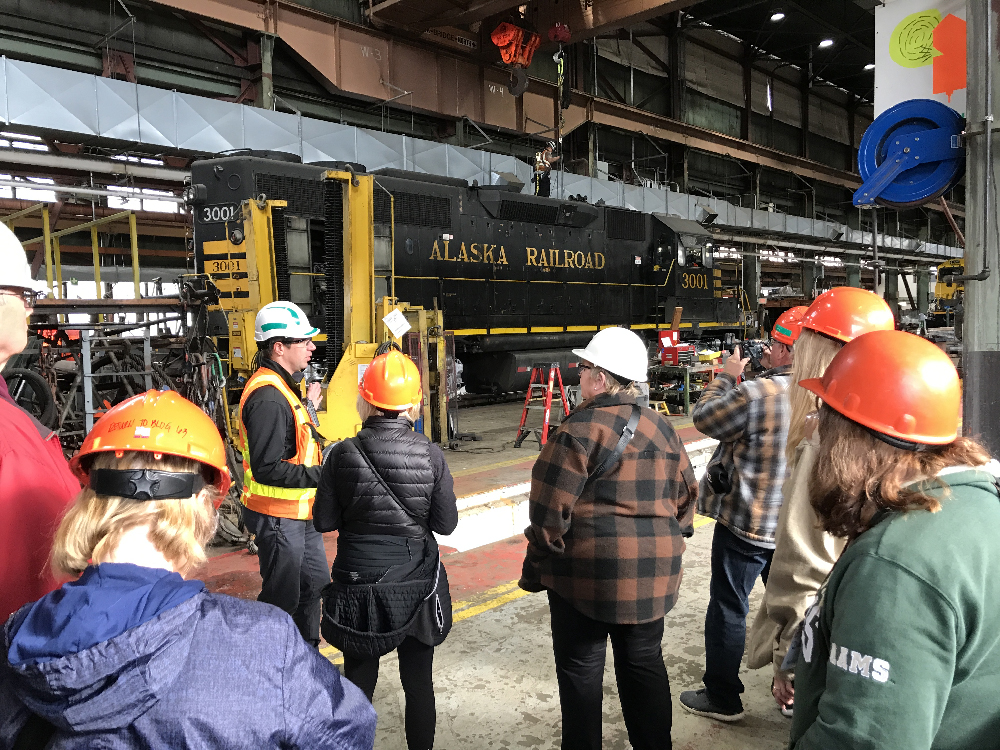Welcome aboard the Trains–Special Interest Tours 2024 Alaska by Rail adventure. Please join us as we travel on the Alaska Railroad for 9 days from Sept. 8 to 17, heading south from Fairbanks to Anchorage, Alaska.
This morning Anchorage experienced a sunrise as colorful as last evening’s sunset. The colors lasted for only a short time as clouds returned with a steady rain. Despite the wet weather, we had a new train to ride and more of Alaska to discover. The Glacier Discovery train travels between Anchorage and Grandview along the shore of the Turnagain Arm of the Cook Inlet south of Anchorage. Between the shifting clouds at least a half dozen glaciers showed on the mountain peaks. Glacier spotting against the gray skies is enhanced as their icy blue color stands out.
We rode the train into Whittier, located on the Passage Channel of Prince William Sound. Whittier has always been a port in some fashion. In 1914, the Alaska Railroad considered a spur to Whittier, which would increase its importance as a sea port. The engineering could not be worked out satisfactorily and the project was dropped. In 1941, the U.S. Army took up the challenge with the intent of making Whittier a major military port. Whittier was a shorter voyage than putting in at Seward and it afforded greater protection from Japanese submarine and air attacks.
On April 23, 1943 the spur was completed from Portage to Whittier. The line required two tunnels — a 1-mile bore through Begich Peak and a 2.5-mile drilling through Maynard Mountain. After World War II, those wishing to move vehicles to or from the now-growing, federally-controlled commercial port at Whittier loaded them on Alaska Railroad flatcars. This worked until the 1990s when the idea of a roadway to Whittier was advocated. In 1998 work began on adding a road to the existing 2.5-mile tunnel.
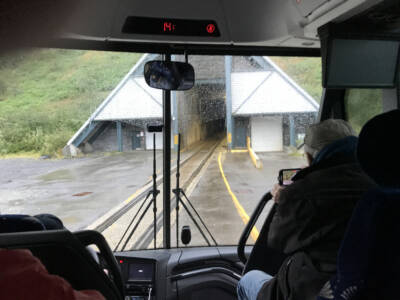
The tunnel was not made wider, but rather the road and rails integrated into one surface on the tunnel floor. Today, Alaska Railroad trains have priority through the Anton Anderson Memorial Tunnel (Anderson was the U.S. Army engineer in charge of the original construction.). Road traffic takes 15-minute turns from alternating directions to pass through the one-lane tunnel.
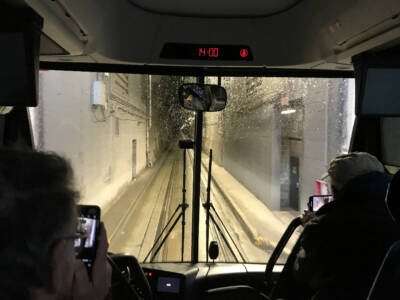
There was a spooky moment along the Glacier Discovery train route — we passed the Ghost Forest. For a mile or so before Girdwood, on both sides of the track, there are no trees — no live trees. There are dozens of dead trees standing in the landscape with no bark and most branches broken off. At 5:36 p.m., March 27, 1964, a 9.2 magnitude earthquake struck Alaska. The epicenter was a little southeast Anchorage along the Turnagain Arm. The Good Friday Earthquake — that’s the day on which it struck — caused the ground in this area to drop by more than 12 feet. The resulting depression allowed salt water from the Turnagain Arm to flood the area, killing, and preserving the trees in place. To this day, virtually no new trees have grown in the area.
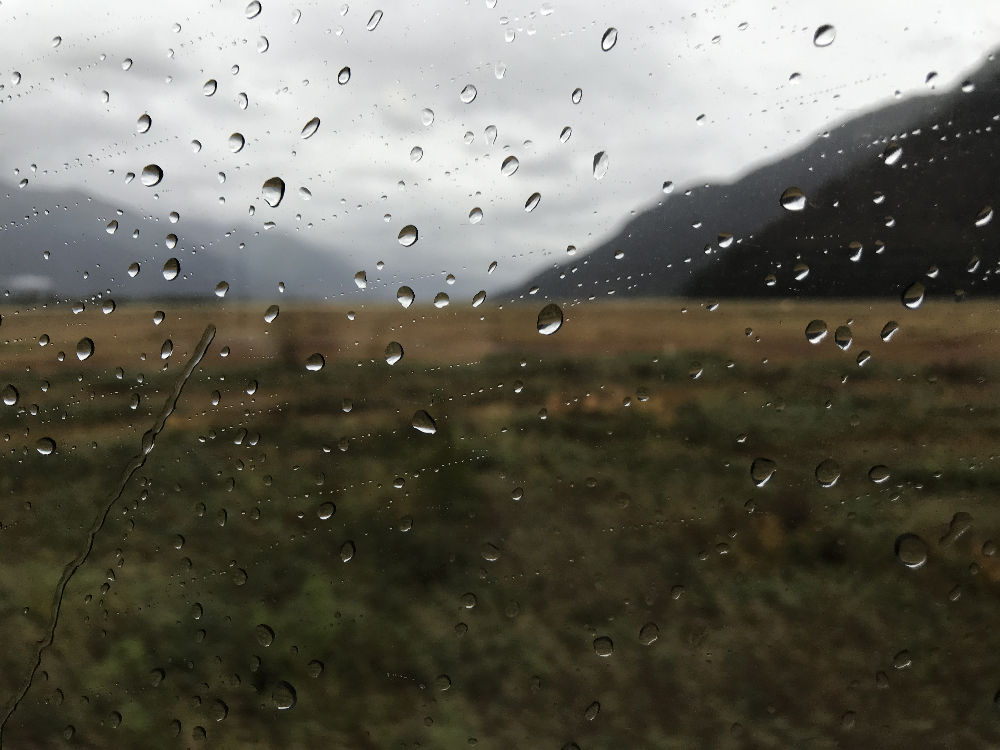
For the next two nights we are residing at the Alyeska Resort, which is at the base of Mount Alyeska, one of Alaska’s top ski destinations. The resort sits at 250 feet above sea level, while the mountain rises to 3,939 feet. The ski area boasts 2,500 feet of vertical drop. We’ll talk more about this mountain later.
Day 8 — We add another transportation mode to our Alaskan adventure. Tomorrow we will be on a cruise looking for glaciers in Kenai Fjords National Park.






